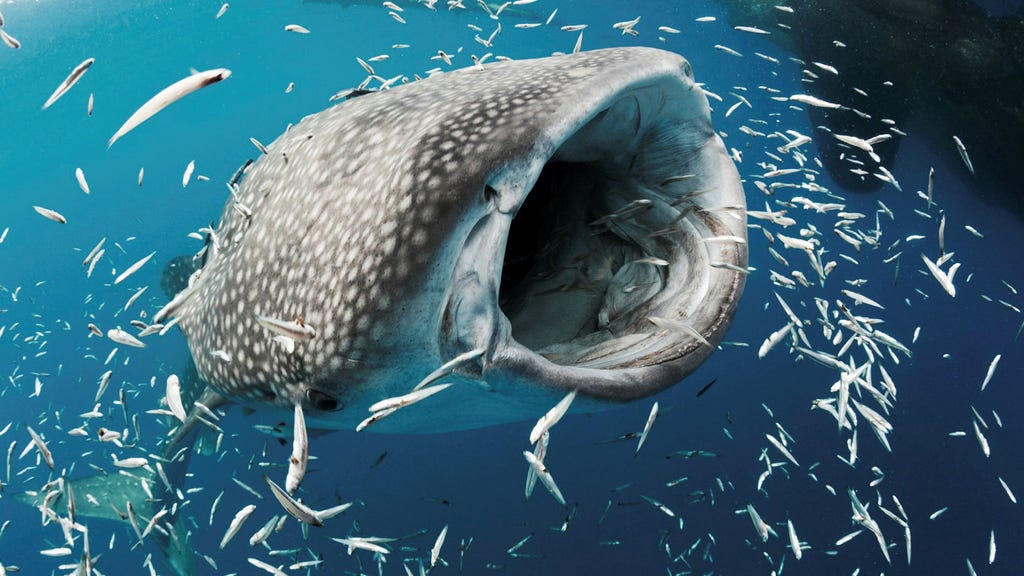The whale shark, a gentle giant of the ocean, captivates with its placid demeanor, distinctive spotted pattern, and colossal size, often likened to a bus. Despite its imposing presence, it poses no threat to humans, preferring to filter feed on microscopic plankton and small fish. However, this peaceful behemoth, the largest fish in the world, is facing an increasingly dire situation: it must flee its current habitats. The question that haunts marine biologists and conservationists alike is: where can such a magnificent creature find refuge in an ocean increasingly impacted by human activities? The answer is complex and requires a deep understanding of the whale shark’s migratory patterns, feeding grounds, and the threats driving it to seek new havens.
The whale shark’s nomadic existence, characterized by vast migrations across ocean basins, is intrinsically linked to its feeding habits. These gentle giants follow the blooms of plankton and other small organisms, their primary food source, which vary with ocean currents and seasonal changes. Their travels take them through diverse marine environments, from shallow coastal waters to the open ocean, highlighting their adaptability. However, this reliance on specific food sources and migratory routes makes them vulnerable to disruptions in the marine ecosystem, whether caused by climate change, overfishing, or habitat degradation. The very predictability of their movements, once a key to understanding their behavior, now exposes them to increased risks from human activities. As traditional feeding grounds become depleted or polluted, the whale shark’s survival hinges on finding new, productive areas where they can thrive, a task made increasingly difficult in a rapidly changing ocean.
The forces propelling the whale shark’s exodus are multifaceted and interconnected. Climate change, the most pervasive threat, is altering ocean temperatures and currents, disrupting the delicate balance of marine ecosystems. Warming waters lead to changes in plankton distribution, effectively shifting the whale shark’s food supply and necessitating longer migrations in search of sustenance. Ocean acidification, another consequence of climate change, poses a direct threat to the plankton and small organisms that form the base of the whale shark’s diet, potentially leading to food shortages and impacting the health of these gentle giants. Furthermore, rising sea levels and increased storm intensity associated with climate change can damage crucial coastal habitats, including coral reefs and seagrass beds, which serve as important feeding and breeding grounds for the whale shark and many other marine species.
Human activities, beyond the overarching impact of climate change, exacerbate the pressures on whale shark populations. Overfishing, particularly of the small fish and crustaceans that supplement the whale shark’s diet, depletes their food sources and forces them to expend more energy in search of prey. Bycatch, the unintentional capture of whale sharks in fishing nets targeting other species, is a significant threat, often resulting in injury or death. Ship strikes, particularly in busy shipping lanes that intersect whale shark migration routes, pose another serious risk. Habitat degradation, caused by coastal development, pollution, and destructive fishing practices, further reduces the available space for whale sharks to feed, breed, and seek refuge. These cumulative pressures have placed enormous strain on whale shark populations globally, necessitating their search for safer, more productive waters.
The quest for suitable refuge for whale sharks requires a multifaceted approach that addresses both the immediate threats and the underlying causes of their displacement. Identifying and protecting critical habitats, including feeding grounds, breeding areas, and migratory corridors, is paramount. This involves establishing marine protected areas, implementing sustainable fishing practices, and mitigating the impacts of coastal development. International cooperation is crucial for effective conservation efforts, given the whale shark’s highly migratory nature, which transcends national boundaries. Sharing data on whale shark movements, population trends, and threats allows for a coordinated response and facilitates the development of comprehensive conservation strategies.
Furthermore, raising public awareness about the plight of the whale shark and the importance of marine conservation is essential. Educating communities about sustainable fishing practices, reducing plastic pollution, and minimizing their impact on coastal ecosystems can create a more hospitable environment for whale sharks and other marine life. Supporting ecotourism initiatives that prioritize responsible whale shark viewing can generate economic benefits for local communities while promoting conservation efforts. The future of the whale shark rests on a collective commitment to protecting our oceans and ensuring that these gentle giants have a place to call home for generations to come. The challenge is immense, but the reward of preserving this magnificent species is invaluable. By understanding the forces driving the whale shark’s displacement and taking decisive action to mitigate these threats, we can offer hope for the survival of this iconic ocean wanderer.














